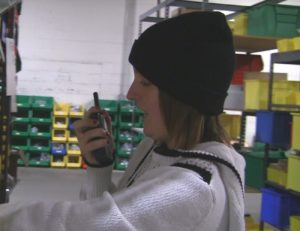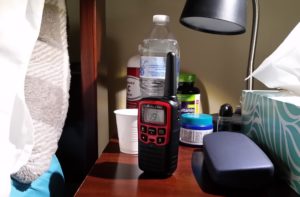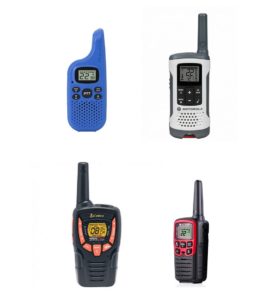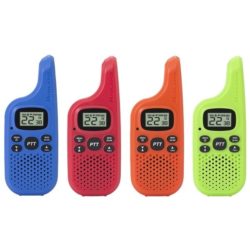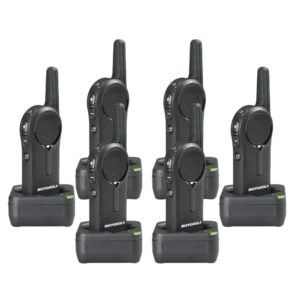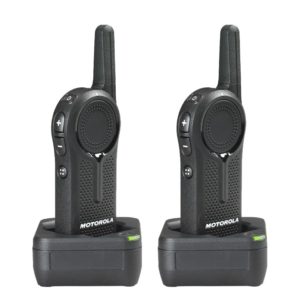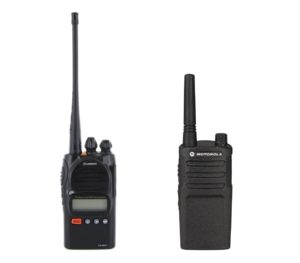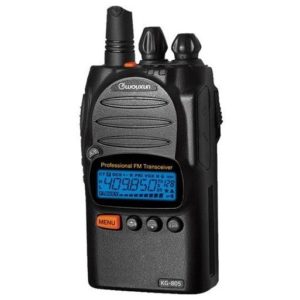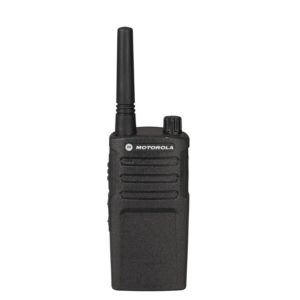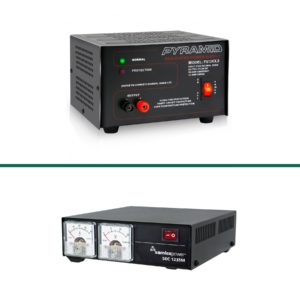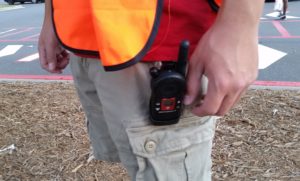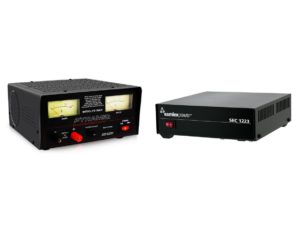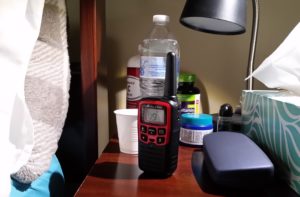 While we certainly hope this scenario isn't the case for you, it is an important one to address. In the event that someone in your family contracts the virus and needs to be isolated within the home, you will need a way to communicate back and forth and monitor the situation while maintaining the necessary protocols of quarantine. This is a situation in which walkie talkies could prove to be an absolute necessity.
While we certainly hope this scenario isn't the case for you, it is an important one to address. In the event that someone in your family contracts the virus and needs to be isolated within the home, you will need a way to communicate back and forth and monitor the situation while maintaining the necessary protocols of quarantine. This is a situation in which walkie talkies could prove to be an absolute necessity.
Isolating one or more family members within the confines of a home is not as simple as it sounds. It puts the entire family at risk. Recent studies have shown that a simple cough can eject micro droplets so small and light, they can hang around in a room with little or no cross-ventilation for hours, or even days, as illustrated in this video. Even normal speech can distribute such micro droplets within a short distance from the speaker.
Considering this, the international recommendation for social distancing at a minimum of six feet or more makes perfect sense when in a public space. The problem is, the practice isn't always practical in a home environment. Since it is common for someone with an illness to be confined to bed in a room inside their apartment or home, the air in that room will fill with those micro droplets quickly, and unless there is plenty of cross-ventilation, those particles won't go away for a long, long awhile. While you should obviously provide care for the afflicted individual, it is also important to minimize unnecessary contact at the same time. You really don't want to go in there just to chat.
Staying at home to distance yourself from the rest of the world is one thing. Isolating someone from the rest of the household is a more complicated matter. Obviously, the less direct contact you have with this person, the better, but how can you do this and still communicate with one another?
The simple solution is to use radios. Using walkie talkies to communicate with an isolated individual can help everyone cope with the situation. Here are five ways walkie talkies can help when you're quarantined with an illness.
Radios can help the quarantined patient communicate with you.
The first and most obvious way to use these walkie talkies is to simply set one at the bedside of the patient in quarantine, and keep the other one for use by the caregiver(s) outside the quarantined area. When one party wants to talk with the other, just press the Push-To-Talk (PTT) button and, well, talk. Pretty simple stuff. And you can expand your communications from there. You can provide radios to everyone in every area of the home, so they can all practice proper social distancing and assist with the home quarantine operations as needed.
Radios such as the Midland T31VP and Cobra ACXT145 have a Call Alert or Call Tone feature that allows the patient to signal when he or she wants to talk. When the call button is pressed, the radio sends an audible alert tone to the other radios within range, much like when a phone rings to indicate a call is received and is waiting to be answered. Some radios have a single tone, while other models such as the Midland LXT633 may have 5 or more. The Midland X-Talker T75 has 10 selectable call tones, five of which are animal sounds. The Motorola T265 has as many as 20!
Models like the Midland GXT1000 even have a whisper feature, which can give the quarantined patient the ability to call for assistance without having to raise their voice. This could be crucial, and can make deliveries of their food, water, and medical needs more efficient.
Walkie Talkies can assist with monitoring the quarantined patient.
If the patient is too sick or weak to physically operate a transceiver on their own, that patient will need to be monitored. This is anther area where walkie talkies may be able to help. The Midland T51VP3, Motorola Talkabout T402, Cobra ACXT345 and many other radios include a feature called Voice Activated Transmit, or VOX. When VOX is activated, the radio will be in a "listen mode" and automatically transmit any sound picked up by the microphone to the other radios. For instance, if the patient calls out for assistance, it can activate the radio to transmit. In this way the radio can be used hands-free.
There are some caveats to this. VOX doesn't just activate by voice. It can be activated by any noise it picks up, any noise at all. If the patient is in a very quiet room, it may not be an issue. However, if there is anything else in the room that can generate noise, such as a TV, cell phone, or fan, it could be problematic, as the noise generated by any of those devices could also trigger the radio to transmit. This can sometimes be mitigated by adjusting the sensitivity settings for VOX in the radio, but will require quite a bit of trial and error.
Also, there is usually a delay between the moment the sound is emitted and the time it takes for the radio to hear the sound and begin to transmit. This could be up to several seconds, depending on the radio, the VOX circuitry, and its setting. The delay can result in the first part of a transmission being clipped and not heard by the recipient. This is normal and can sometimes be minimized somewhat by playing around with the VOX sensitivity settings, but not entirely eliminated. It's not a perfect science, but it is possible to use VOX to monitor the audio in a room in certain circumstances and under the right conditions.
Radios can help you communicate with everyone else inside and outside the quarantined area.
Walkie Talkies allow everyone in the home to be separated and keep it all together at the same time, both figuratively and literally speaking. When one person or group is required to remain separated from another, walkie talkies keep everyone in both groups communicating in order to co-ordinate and maintain the necessary parameters for distancing within the domicile. This is especially important, as it can help to avoid cross contamination between the assigned spaces of those who are ill and those who are not.
Radios can transmit fast, instant alerts to the entire household.
Need to send an urgent message or alert to others in the home while avoiding direct contact with them? Walkie talkies can do that, too. The Motorola T480 and T600 are equipped with an emergency alert feature that allows you to signal everyone within range of an urgent matter or situation that requires their immediate attention. This can be especially useful if the quarantined patient takes a turn for the worse and needs medical attention or a trip to the hospital. It is important to understand that the emergency alert feature is not a substitute for calling 9-1-1 and it should not be misconstrued as such. It is not connected to any emergency system. It is merely intended for sending an alert to other family members in the household who are monitoring the patient that he or she may be in some distress or in urgent need of assistance.
Radios can provide a measure of comfort and security for the patient.
Let's face it, when someone is sick, they aren't just physically ill. The effects of quarantine and confinement is also an emotional and mental strain. The isolation can bring on feelings of loneliness and depression, which only adds to the physical discomfort or pain. Simply having a radio by the bedside can actually be psychologically beneficial, because they know can can call instantly, at the mere push of a button, and someone else in the household is likely to respond in kind. It symbolizes that even though no one can be in the same room, next to them, someone is nearby, monitoring them, and they are not truly alone. That is a very powerful and positive message, transmitted by the mere presence of a radio, without even pushing a button.
It is our hope that this pandemic ends soon for everyone's sake, and everyone currently stuck at home or quarantined with the virus recovers completely and quickly so we can all resume our normal activities of life. However, if you do find yourself or your family in isolation, there are ways to help ease the stress of confinement, improve the quality of caregiving, and mitigate the risk to others by using reliable and efficient two way radio communications. Buy Two Way Radios can provide you with the guidance and recommendations needed to do this safely, effectively and at minimal cost.
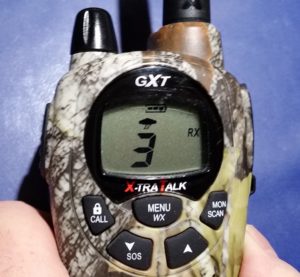 We often stress the importance of having an emergency weather radio for your personal safety and preparedness. These devices are proven to be invaluable in case of a severe weather event such as a hurricane, tornado or flood. But did you know they can alert you to other types of local and national civil emergencies as well? They can! Emergency radios can receive alerts for a number of non-weather related events, including pandemics such as the Coronavirus or COVID-19 emergency currently gripping much of the world in the year 2020.
We often stress the importance of having an emergency weather radio for your personal safety and preparedness. These devices are proven to be invaluable in case of a severe weather event such as a hurricane, tornado or flood. But did you know they can alert you to other types of local and national civil emergencies as well? They can! Emergency radios can receive alerts for a number of non-weather related events, including pandemics such as the Coronavirus or COVID-19 emergency currently gripping much of the world in the year 2020.




